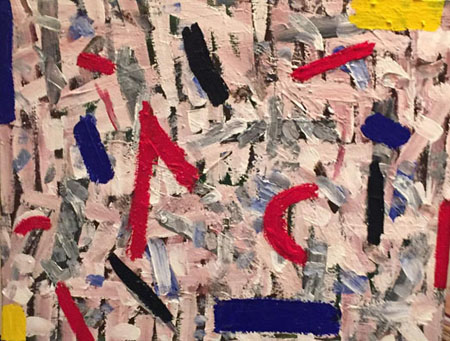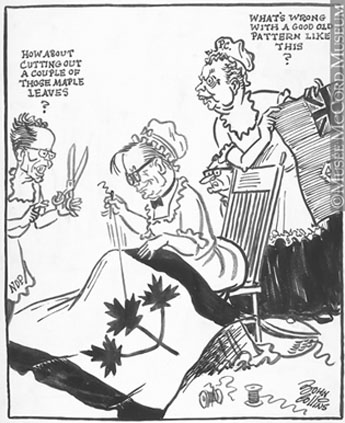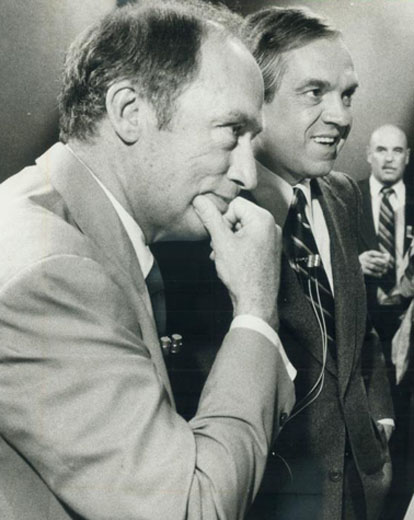No kind of formal Liberal-NDP accord in Ottawa after 2021 election for now?
Nov 9th, 2021 | By Counterweights Editors | Category: In BriefFROM THE COUNTERWEIGHTS EDITORS, GANATSEKWYAGON, ON. NOVEMBER 9, 2021. Liberal-NDP co-operation in Canadian federal politics — albeit mostly informal — has a history that goes back to the beginnings of the modern New Democratic Party in the 1960s.
But it looks like rumoured prospects of some 2021 formal agreement, broadly on the model of the 1985 Liberal-NDP Accord in Ontario provincial politics, have at least for the moment been disavowed by people in both parties.
According to Peter Zimonjic at CBC News yesterday : “Multiple sources in the NDP and the Liberal Party say talk of a formal working agreement has been overblown … ‘It is not accurate to say there is a formal agreement or talks to have a formal agreement,’ said one Liberal with knowledge of the matter. A New Democrat source called the notion of a formal deal ‘wishful thinking.’ Both sources spoke on the condition they not be named.”
According to Caroline O’Neill at CTV News : “The Liberal house leader dismissed the idea of a potential Liberal-NDP coalition heading into the new parliamentary session … Mark Holland was asked if there are any formal or informal talks between the Liberals and the NDP … ‘There’s talks, as I want to emphasize, with every party’ … Holland said voters want to see collaboration [but] ‘I don’t see just one party that we can work with’.”
According to Marie Woolf at the Canadian Press : “NDP MP Charlie Angus says no deal has been made with the Liberals to prop up Prime Minister Justin Trudeau’s minority government for two to three years … Angus confirmed that ‘an initial conversation’ had taken place between NDP Leader Jagmeet Singh and Trudeau, but it was no more than ‘an initial meeting’.”
Ms Woolf went on : “Before the Liberal caucus meeting Monday [November 8], Foreign Affairs Minister Melanie Joly was asked about whether her party was open to working with the NDP, either formally or informally … ‘We’re always open to work with all parties. That’s what Canadians expect from us … the prime minister had the chance to meet with all other leaders and in that sense we want to make sure that we’re able to get our agenda supported by other parties.’”
As noted, federally there has been a long history of Liberal-NDP co-operation. It stretches from the informal ties between Lester Pearson’s 1960s minority governments and Tommy Douglas’s New Democrats, that largely created the present day Canadian welfare or “service state” (with its own unique Canadian flag), to the 2019-2021 guarded Liberal-NDP informal agreement on the interventionist public policy that has helped Canadians meet the challenges of COVID-19.
Back in the spring of 2011, four days before the federal election that finally gave Stephen Harper’s new Conservative Party of Canada a majority government, the Carleton University journalism professor Randy Boswell published a more detailed account of the long history in ipolitics (“NDP, Liberals have a long history of co-operation, Apr 28, 2011 4:23pm”).
At that point in 2011, Mr. Boswell noted, PM Harper was (in part quite incorrectly) telling voters “that an ‘illegitimate’ and ‘reckless’ opposition coalition will seize power if the election results in a[nother] Conservative minority.” At first Mr. Harper called the coalition “an ‘Ignatieff-led’ opposition pact” — after Liberal leader of the day Michael Ignatieff. By the time of the Boswell history article, PM Harper was arguing : “The choice facing Canadians now … was between a ‘stable’ Conservative majority and a ‘ramshackle coalition led by the NDP’.”
Boswell’s history also notes that, at the provincial level in Canada, the 1985 Liberal-NDP Accord in Ontario “offered a template for former Saskatchewan NDP premier Roy Romanow when he decided to construct an NDP-Liberal coalition following a 1999 election that left his party one seat short of a majority … The 29 NDP members and three Liberals combined against a 26-member Conservative opposition in a coalition government that lasted four years.”
Federally, New Democrats have tended to see too close or formal co-operation with Liberal governments as a losing game. (Pierre Trudeau’s 1972 minority government, propped up by David Lewis’s NDP until a fresh election in 1974 gave the Liberals a majority government on their own, may be the classic lesson on what not to do for many NDP partisans.)
The most tantalizing case of an actual Liberal majority-government offer of a formal, full-fledged Liberal-NDP Coalition government — with some NDP MPs in the cabinet — took place after the 1980 federal election. Pierre Trudeau had won a Liberal majority government, but his only two seats west of Ontario were in Manitoba. In the wake of the 1980 Quebec sovereignty referendum he knew he would have to do some heavy constitutional lifting. He felt his government could do this best with stronger representation from Western Canada. And in 1980 Ed Broadbent’s New Democrats had 26 of their 32 seats (or more than 80%) west of Ontario.
Broadbent (with the 1974 election still fresh enough in mind) turned the offer down. But his 32 New Democrats in parliament did support the ultimately successful struggles of the Pierre Trudeau Liberal majority to “patriate” an amendable-in-Canada Constitution of Canada from the parliament of the United Kingdom at long last, prefaced by a Canadian Charter of Rights and Freedoms in what is now called the Constitution Act, 1982.
The majority of NDP federal seats today (albeit just more than 70%) are still in Western Canada. Yet the great difference between 1980 and the latest federal election this past September 20 is in Tommy Douglas’s and Roy Romanow’s home province of Saskatchewan. In 1980 New Democrats won 7 of Saskatchewan’s 14 seats. In 2021 the Jagmeet Singh NDP won no seats in Saskatchewan at all (just like the Justin Trudeau Liberals).
There nonetheless remains some strange (or not-really-so-strange) symbiosis between Liberals and New Democrats in Canadian federal politics. And we may well see some kind of further examples of this deep-rooted historical trend over the next few years in Ottawa.






